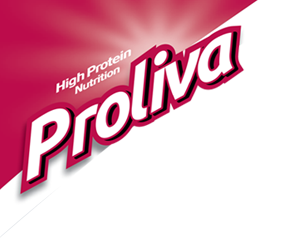-
The Principles of Protein
01.03.2019Protein is an essential part of the human diet. It’s found in a large variety of foods, including eggs, dairy, seafood, legumes, meats, nuts and seeds. Regardless of the source, the protein that we eat gets broken down and re-formed into new proteins in our bodies. These proteins do everything from fighting infections to helping cells divide.
At its simplest, a protein is a chain of amino acids bound to one another by peptide bonds like a string of beads. These strings get twisted and folded into a final protein shape. When we eat protein, it gets broken down into its individual amino acids. Although there are hundreds of amino acids in nature, humans use only about 20 of them to make basically every type of protein we need. One way to categorize them is by defining which ones our bodies can make ourselves and which ones we cannot. There are five amino acids—alanine, asparagine, aspartic acid, glutamic acid, and serine—that we can get from foods but that our bodies can also make. These five are called nonessential amino acids. There are six amino acids that we call conditionally essential because healthy bodies can make them under normal circumstances but not in some conditions, like when the body is in starvation mode or when there are certain inborn errors of metabolism. These conditionally essential amino acids are arginine, cysteine, glutamine, glycine, proline, and tyrosine. Finally, there are nine amino acids that we can get only from food: histidine, isoleucine, leucine, lysine, methionine, phenylalanine, threonine, tryptophan, and valine. We call these the essential amino acids.
In general, animal-based protein foods like eggs, dairy, seafood, and meat provide all nine essential amino acids in adequate amounts. Soy foods are unique in that they are plant-based and also provide all nine essential amino acids in adequate amounts. Most other plant foods, including whole grains, legumes, nuts and seeds, have high amounts of some amino acids and low amounts of others. Hearing this, it might be easy for us to assume that animal-based foods provide more protein than plant-based sources, but as it turns out a cup of tofu has the same amount of protein as 3 ounces of steak, chicken, or fish; and half a cup of lentils has more grams of protein than an egg! And not all plant foods are low in the same amino acids, so eating a variety of plant-based foods can provide all nine of the essentials. However, in terms of volume, it may be necessary to eat more plant-based foods to get an amount of protein and amino-acid profile that is similar to those provided by animal-based proteins.
Generally speaking, daily protein requirements are based on studies that estimate the minimum amount of protein needed to avoid a progressive nitrogen loss. The World Health Organization guidelines and the U.S. Recommended Dietary Allowance each estimate that daily protein requirements for healthy adults are about 0.80 grams per kilogram of body weight, which translates to 0.36 grams per pound of body weight. Protein recommendations per day vary by age, too. Children 1 to 3 years of age are recommended to get 13 grams. For ages 4 to 8, 19 grams are recommended. And between ages 9 and 13, 34 grams are recommended. Whether a person is male or female also impacts protein needs. Females ages 14 and above are recommended to get 46 grams of protein per day. Males ages 14 to 18 need slightly more, about 52 grams per day. And it’s recommended that males ages 19 and older get 56 grams per day. Some groups, like pregnant and breastfeeding women as well as athletes, have elevated protein needs, and older adults may also benefit from eating more protein.
Getting the right amount of protein per day can be achieved in multiple ways. For example, one serving of Greek yogurt with breakfast, a salad topped with 3 ounces of chicken for lunch, and 3 to 4 ounces of fish at dinner provides about 64 grams of protein. Getting the same amount of protein could also be achieved by eating a cup of tofu scramble and a slice of peanut butter toast for breakfast, a cup of shelled edamame with lunch, and one cup each of lentils and brown rice at dinner—a day of eating that also offers about 64 grams of protein in total.
It’s still unclear what an “optimal” amount of protein is, and research is ongoing. In clinical settings, there are certain individuals who may be at risk for a protein deficiency, including patients with malnutrition, trauma and burn injuries, and those with various conditions impacting nutrient absorption, such as inflammatory bowel disease. These individuals may have increased protein needs compared with the general population. Except for certain circumstances such as kidney disease, there usually isn’t a health risk associated with eating a lot of protein because our bodies are able to process it.
In summary, protein is a cornerstone of the human diet and a major component of our bodies. There are five nonessential, six conditionally essential and nine essential amino acids. We need to get essential amino acids from our diet. Protein needs vary depending on life-cycle stage, level of physical activity and health status. Some health conditions may put people at risk for a protein deficiency or increase protein needs. Everyone, whether they are omnivorous, vegetarian or vegan, can get enough protein by eating a variety of foods.
Source: https://foodinsight.org/nutrition-101-video-series-the-principles-of-protein/
Latest Blog Post
- Sugary Drinks Linked to a Higher Cancer Risk
- The Latest Research on Protein and Muscle-Building
- 27 Health and Nutrition Tips That Are Actually Evidence-Based
- Tall order: More to good growth in toddlers than just measurements
- Millions of cardiovascular deaths attributed to not eating enough fruits and vegetables

